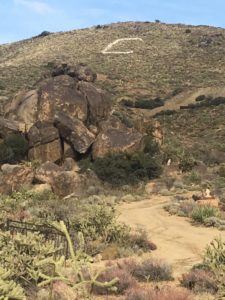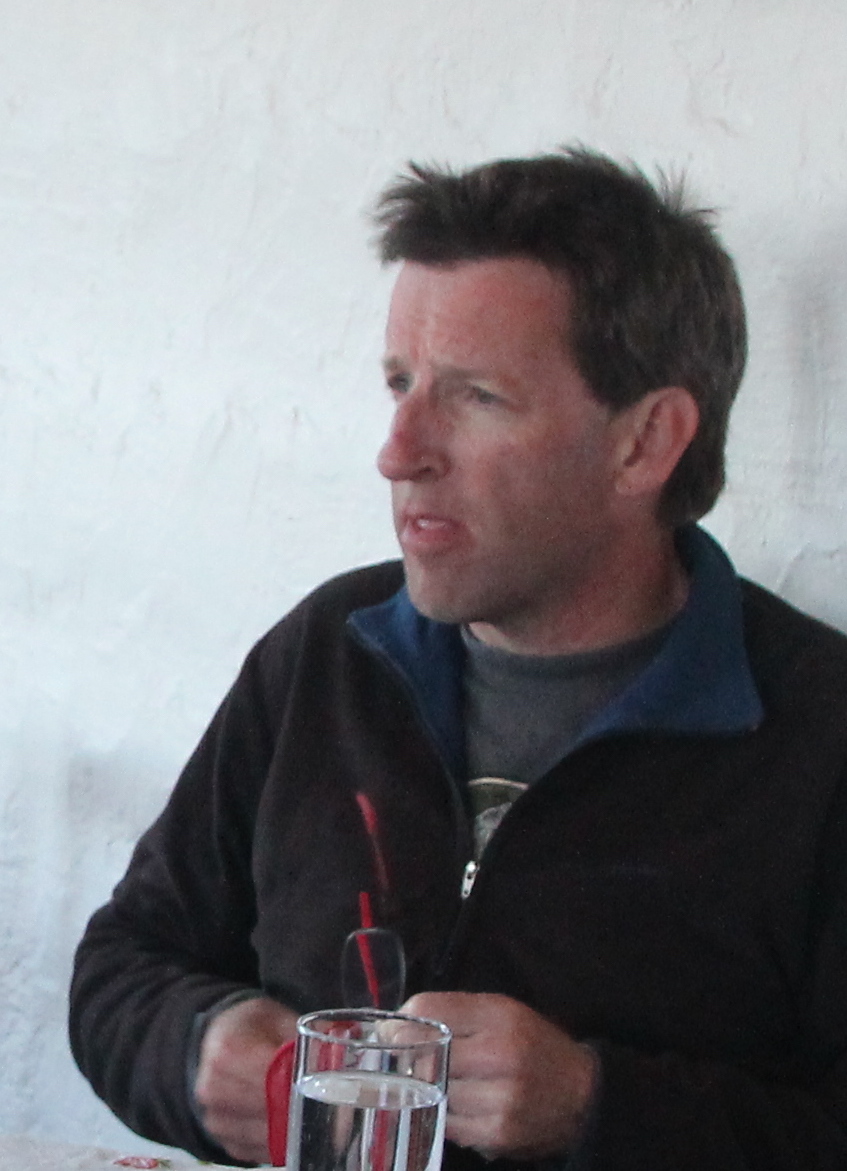 Let’s begin with A. A for arroyo, also often known as wash: “often steep-walled . . . flat-bottomed or laden with boulders and gravel,” an attribute that comes in handy if you have an old Willys jeep, as my friend Jim has, and a need for a winter camp out of the way of the chilly wind, as we did more than once back when I lived in Tucson. You can drive up a backcountry arroyo to a bend where you are out of sight of everyone else in the surrounding terrain, which was always a general desire of ours when exploring near the border, and the shed branches of ironwood and mesquite provide fine firewood as well.
Let’s begin with A. A for arroyo, also often known as wash: “often steep-walled . . . flat-bottomed or laden with boulders and gravel,” an attribute that comes in handy if you have an old Willys jeep, as my friend Jim has, and a need for a winter camp out of the way of the chilly wind, as we did more than once back when I lived in Tucson. You can drive up a backcountry arroyo to a bend where you are out of sight of everyone else in the surrounding terrain, which was always a general desire of ours when exploring near the border, and the shed branches of ironwood and mesquite provide fine firewood as well.
The quote comes from an invaluable book called Home Ground, a compendium of North American landscape terms edited by Barry Lopez and Debra Gwartney. The memory is mine, and Jim’s. And the word is everybody’s, a beautiful shared belonging that rolls off the tongue—as Spanish-derived words so often do—and perfectly matches what it describes, the initial syllable reminding us that arroyos are both creations and creators of arid terrain, the rolling ending a hint at the rushing of gravel and boulders and random watershed debris that can pulse down the thing, to our peril, when there’s a cloudburst.
Or B: B is for bosque, another word of Spanish heritage, and there’s no better for naming the tangled and stiff-branched woodlands of mesquite and hackberry and graythorn that grow along the watercourses of southern Arizona. These are places where as a young field biologist I used to spend a lot of time looking for the rare ferruginous pygmy-owl by walking along the thickets at dawn and dusk, playing a recording of its monotonous tooting call and then hoping for a like response to go along with the deep hooting of great horned owls, the plaintive cries of hillside poorwills, the choruses of coyotes.
I never did find one, but those walks are etched in memory. You might say that I sometimes still take them.
Or C, C for canyon of course. Though there are endless multitudes of examples in the Grand Canyon State, the one I return to again and again, both literally to hike and figuratively as a sort of memory rosary when I am sleepless at night, worried about the state of the world, or of my life in particular, or when I am bored in a waiting room, then it is comforting to remember once again the specific twists and turns of the North Kaibab Trail and how it rises so improbably through the Redwall Limestone. As you rise with the trail you experience viscerally with each heavy breath the embodiment of a canyon as negative space, a dendritic anti-filing system that in bearing the memory of all that has been carried off reminds us that if you have too much stuff it is a much better idea to get rid of it in a beautiful way than to continue to be burdened by it.
Home Ground was published in 2006, and the editors’ goal was, according to Lopez, to regain “a sense of allegiance with our chosen places, and along with that a sense of affirmation with our neighbors that the place we’ve chosen is beautiful, subtle, profound, worthy of our lives.” That process is facilitated, he argued, when we use language that has grown out of the land itself, with its marvelously descriptive terms rooted in a variety of tongues. “It is a language,” he wrote, “that keeps us from slipping off into abstract space.”
D is for desert pavement, the intricate mosaic of dark-washed pebbles that crest and crinkle over the low-relief irregular plains in the wide deserts east of Yuma—a place that most drivers powering by on I-8 really do view as nothing more than abstract space, a nothingness to be defeated by time. They’re created when water or wind remove all the finer sediments and leave only stones that over millennia take on darker and darker hues. They’re heavy, too, substantial, with a satisfying heft, and I still carry one of them around with me in my jacket pocket, a reminder of how in my first years in Arizona I spent a lot of time roaming that tumbled country, conducting bird surveys and falling in love with the desert, getting to know on foot the state that I had decided was becoming my home.
In fact it was through this exploration, and through the gift of being able to put appropriate words to the landscape, that the place did become home. Of all our cultural acts of getting to know a habitat, the act of naming has got to be one of the most profound. It is also fraught, of course, especially with the knowledge of conflict between cultures. I don’t know the Diné or Hopi terms for arroyo, or the Tohono O’odham for desert pavement. It is a worthy goal to learn them and for all of us to apply them more broadly—to reinhabit landscapes with the oldest terms that we collectively have for them, for age and use provide a rich and meaning-studded patina to language just as they do to desert stones.
It’s winter now, when it’s hard often to rouse myself to leave a warm house and hike in the cold. But I tend to view it as a sort of obligation, if to no one but myself, because I suspect a day will come when I’m no longer able to make it to the southern Arizona encinal, the miniature hoodoos of White Canyon, the krummholz up on the Peaks—to say nothing of the terms beginning with the second half of the alphabet. The elaborated language of place demands commitment. It takes work to keep a language alive, just as heirloom seeds can only persist when we grow them out every once in while. Always that work is mental—what was that word, the perfect one to describe this?—and sometimes it’s physical—just getting there.
The long-term return on investment is this: when I’m old, and can’t make it to the places I’ve come to love, I believe that specific terms themselves will help me remember trips in place. All those cienegas and charcos, the dendritic drainages splitting the bajadas below some escarpment, the lava caves in the malpais, the hanging valleys and grabens. In memory I’ll still be visiting them, grateful for a gift composed of equal parts nature and culture.

